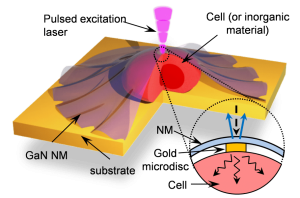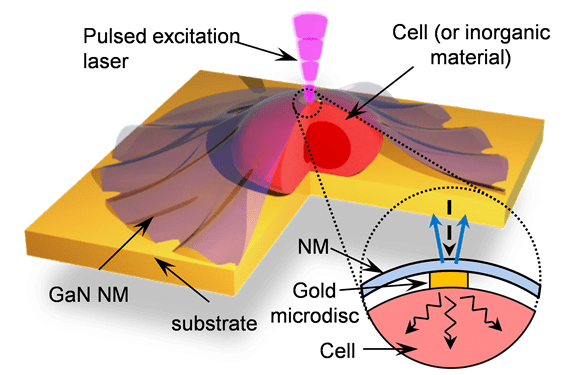For the first time, scientists from the King Abdullah University of Science and Technology (KAUST) in Saudi Arabia succeeded in differentiating between two different types of cancer (cervical and breast cancers), and also between subtypes of the same cancer (basal and luminal cancer cells) by measuring their thermal-transport properties. This approach is based on the effect of laser-heating flexible nanomembranes (NMs) that are in direct contact with cancer cells.
Due to their relatively small volumes and irregular curvilinear shapes, living cells pose extra challenges for measuring their thermal-transport properties. For this reason, Boon S. Ooi et al. based their technique on NMs which, due to their extremely small flexural rigidity, are capable of accommodating the irregular and curvilinear cellular shape for better thermal contact.

As illustrated in the Figure, the cell is attached to a substrate and covered with the gallium nitride (GaN) nanomembrane. A pulsed, focused laser beam locally heats the NM which induces photoemission (blue arrows) and spontaneous heat diffusion (zigzagged black arrows) from the NM to the cell underneath. Obtaining the NM’s temperature by measuring the spectral-shift in the PL emission, yields information about the cell’s thermal properties. The function of the gold (Au) microdisc is to block unabsorbed laser radiation to prevent it from being absorbed within the underlying cell.
This novel thermal conductivity and diffusivity measuring technique opens up many opportunities in numerous biomedical applications, such as high-precision single-cancerous-cell targeting, thermal imaging techniques, detection of cancer types, and assessing cellular health and viability.

















